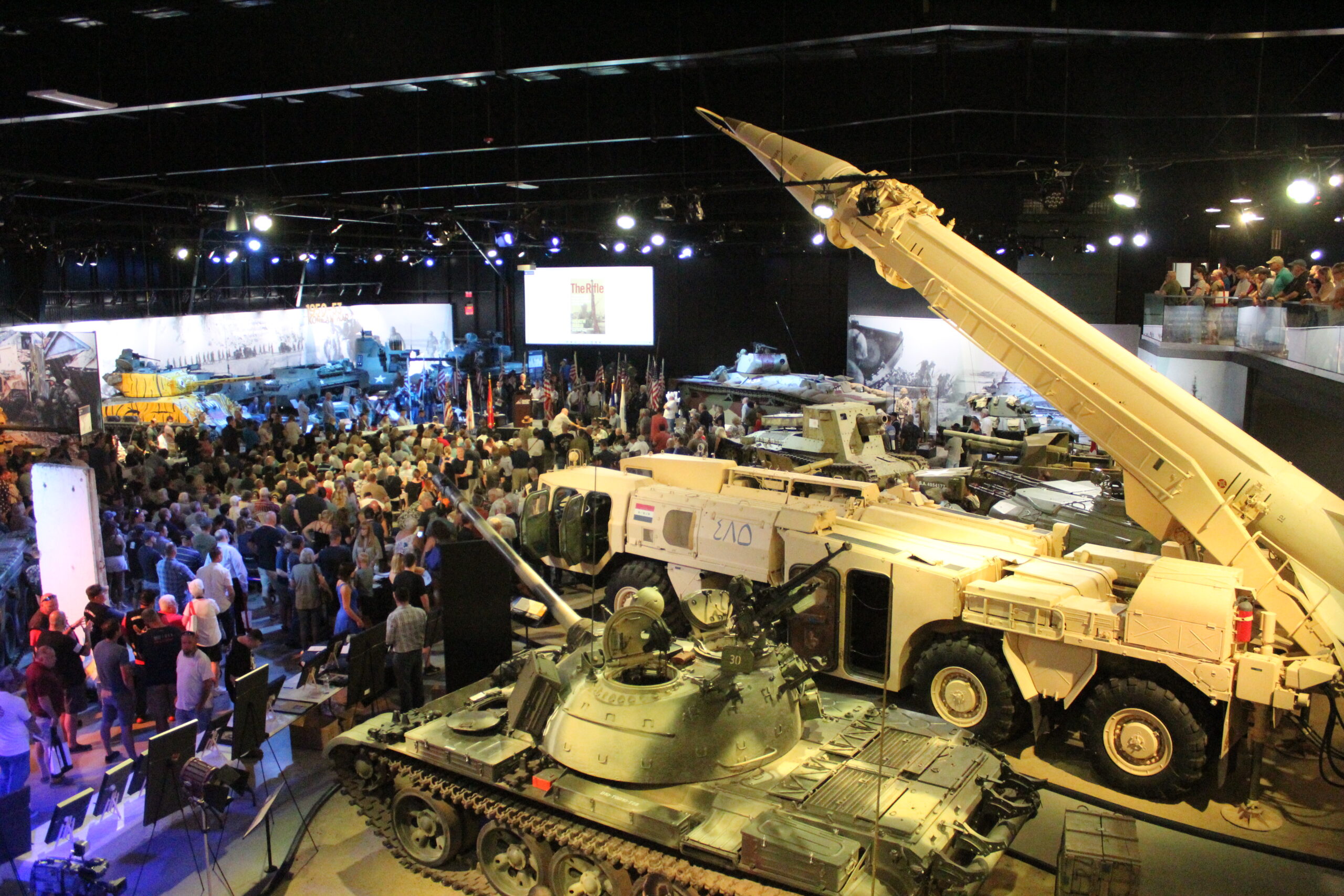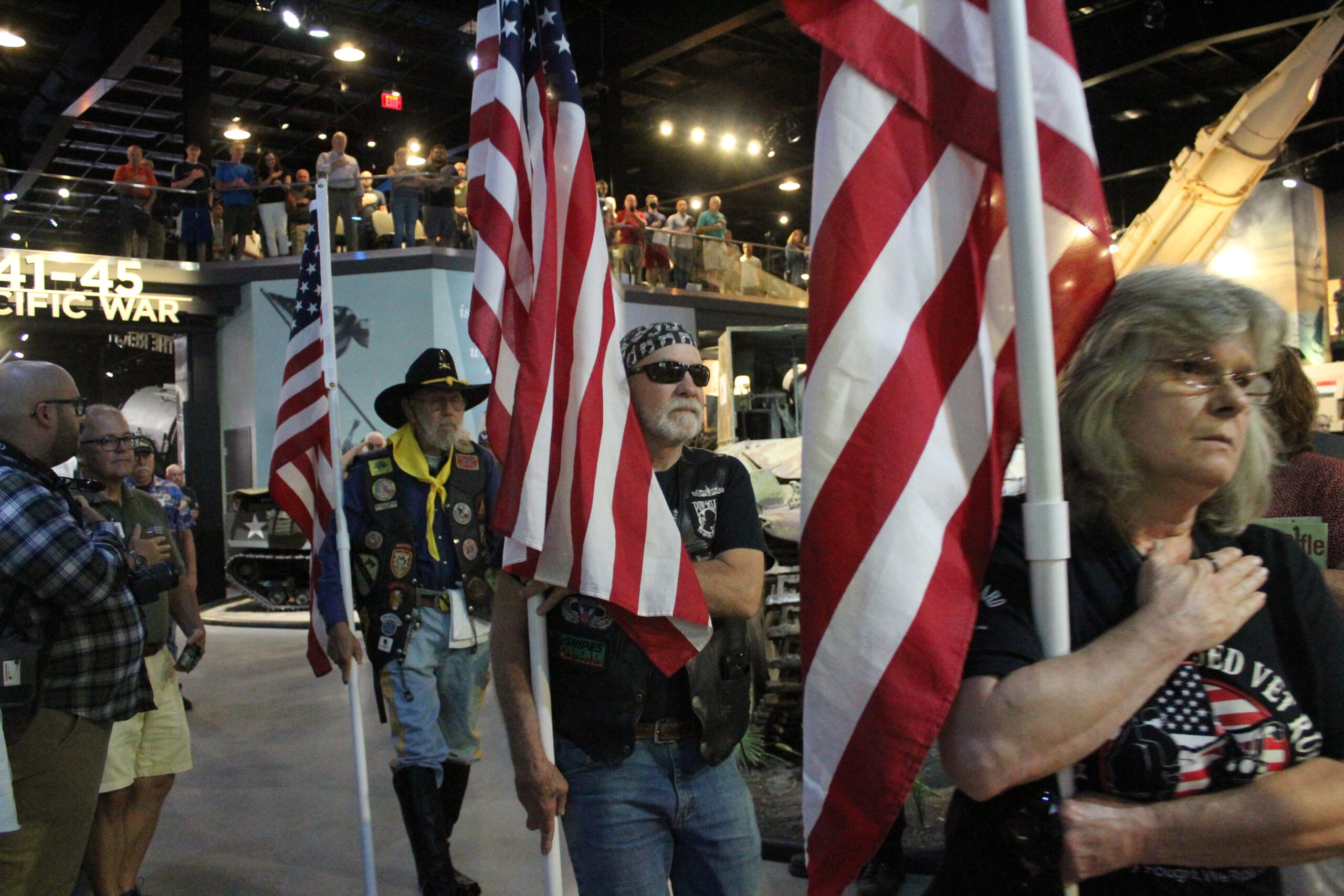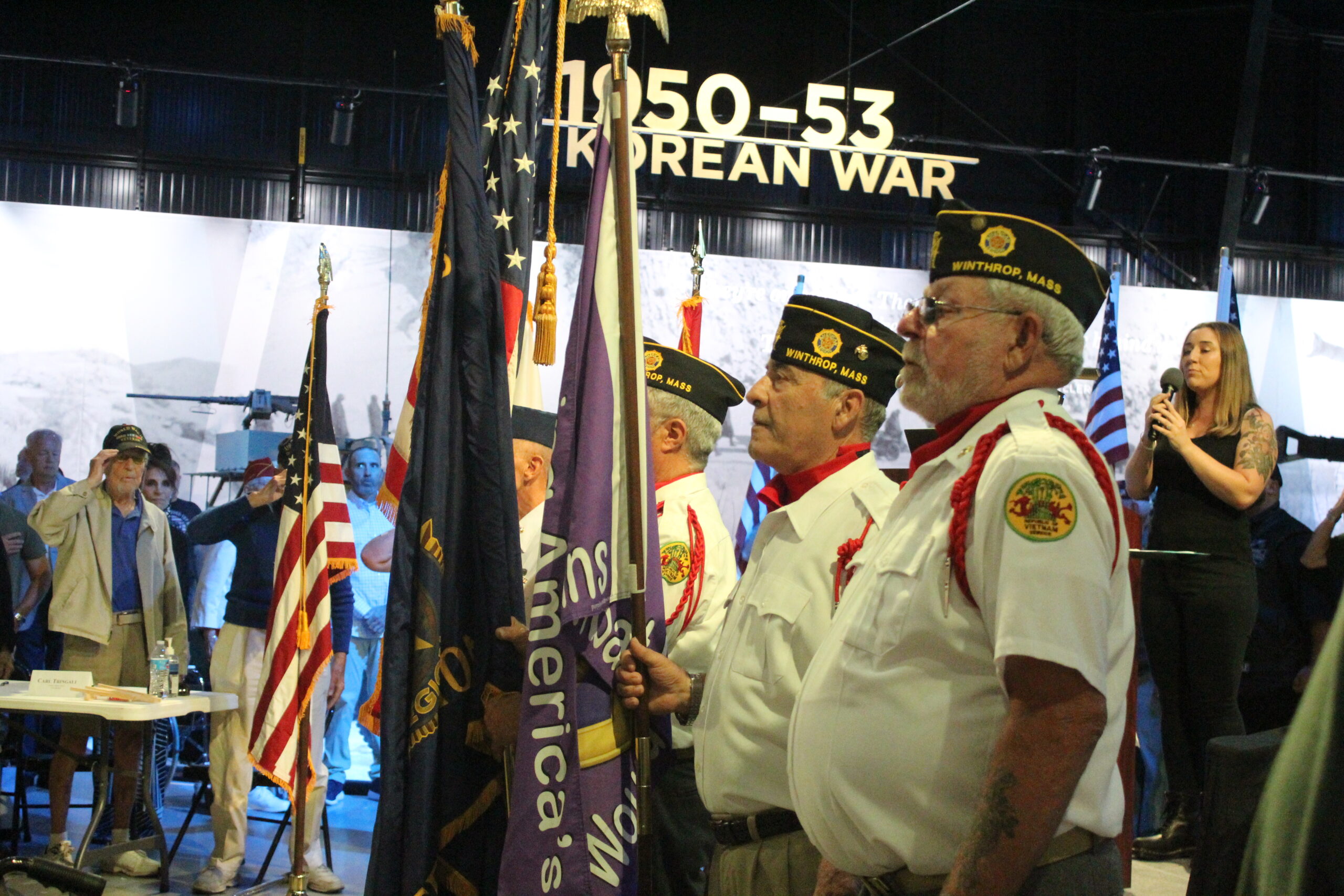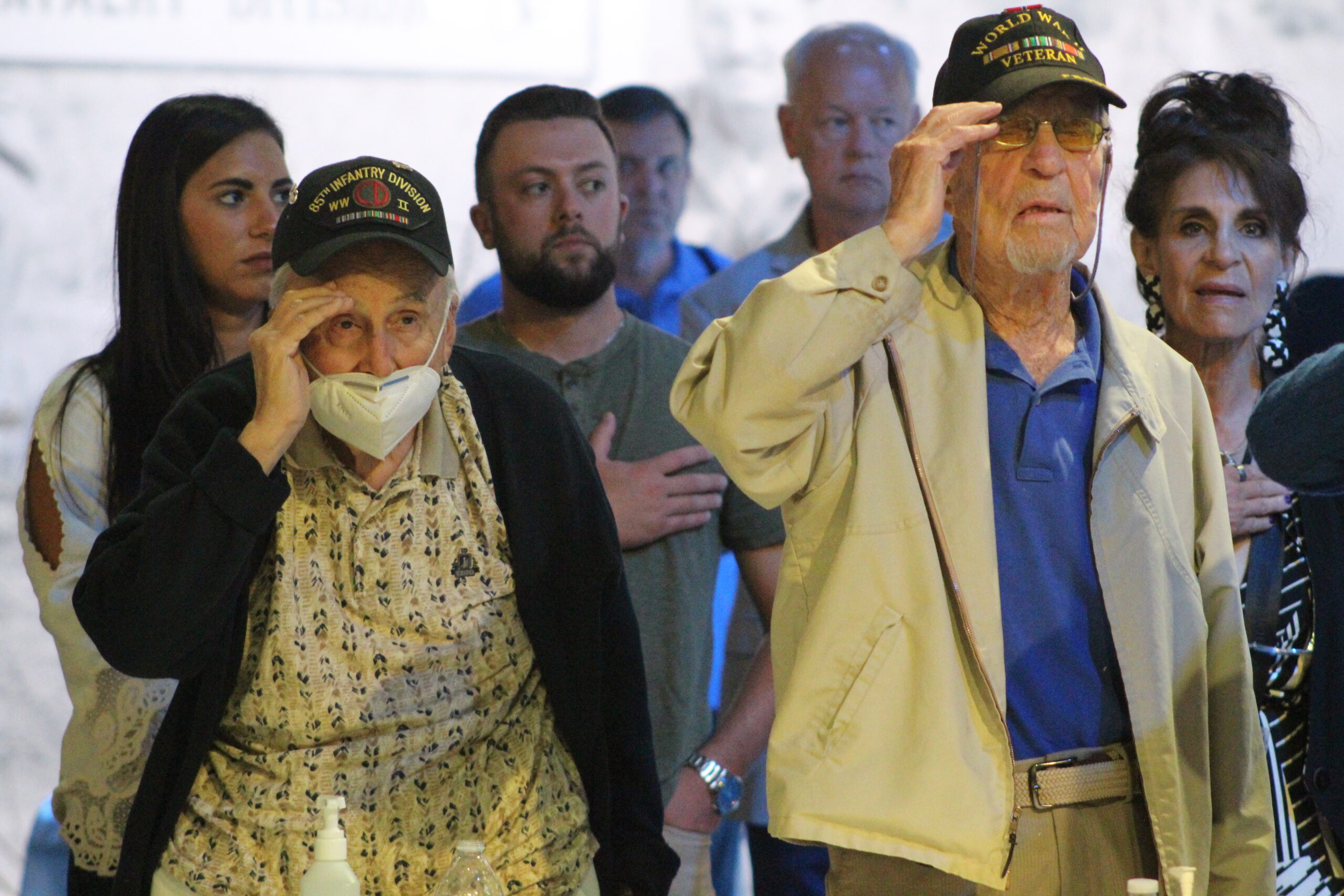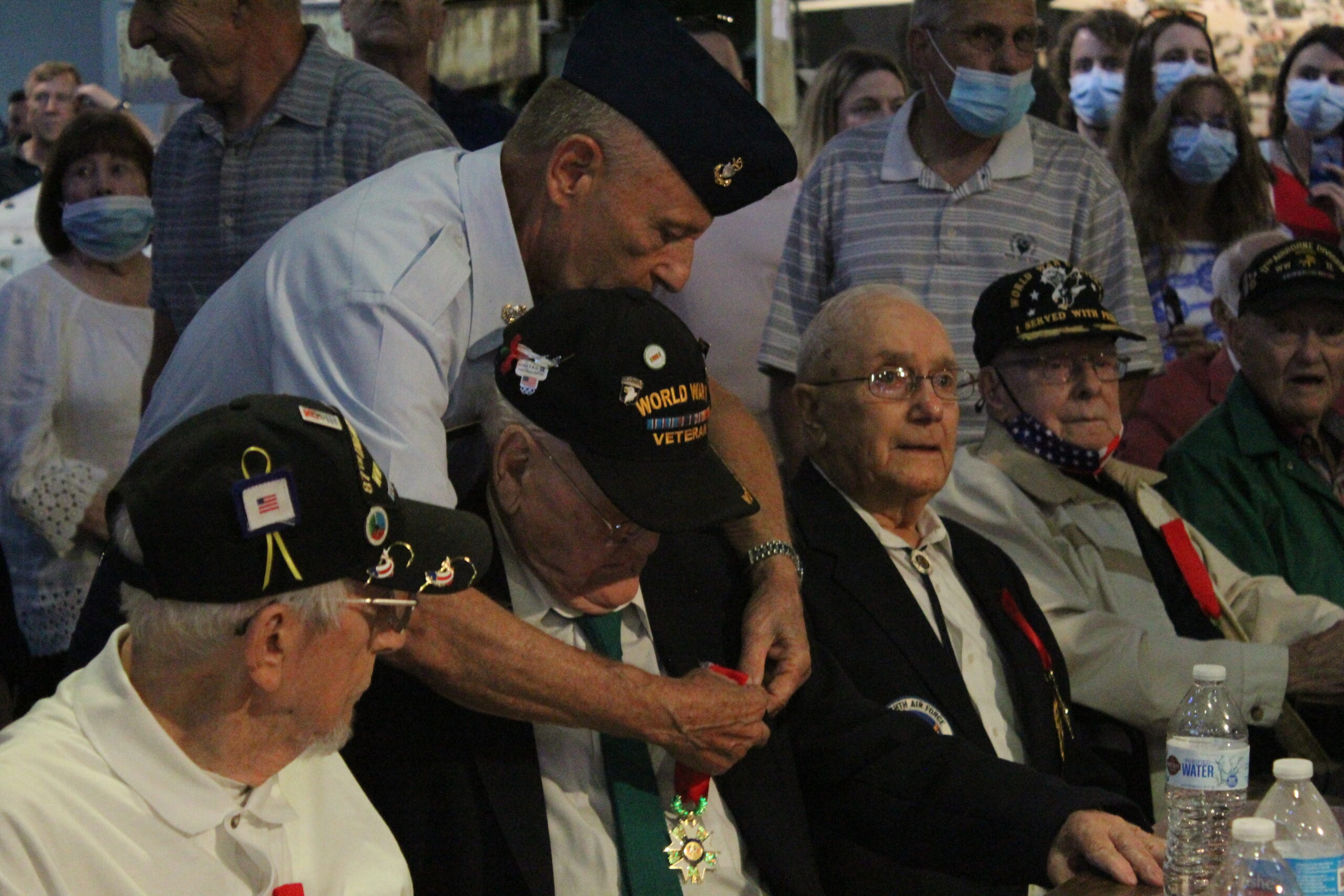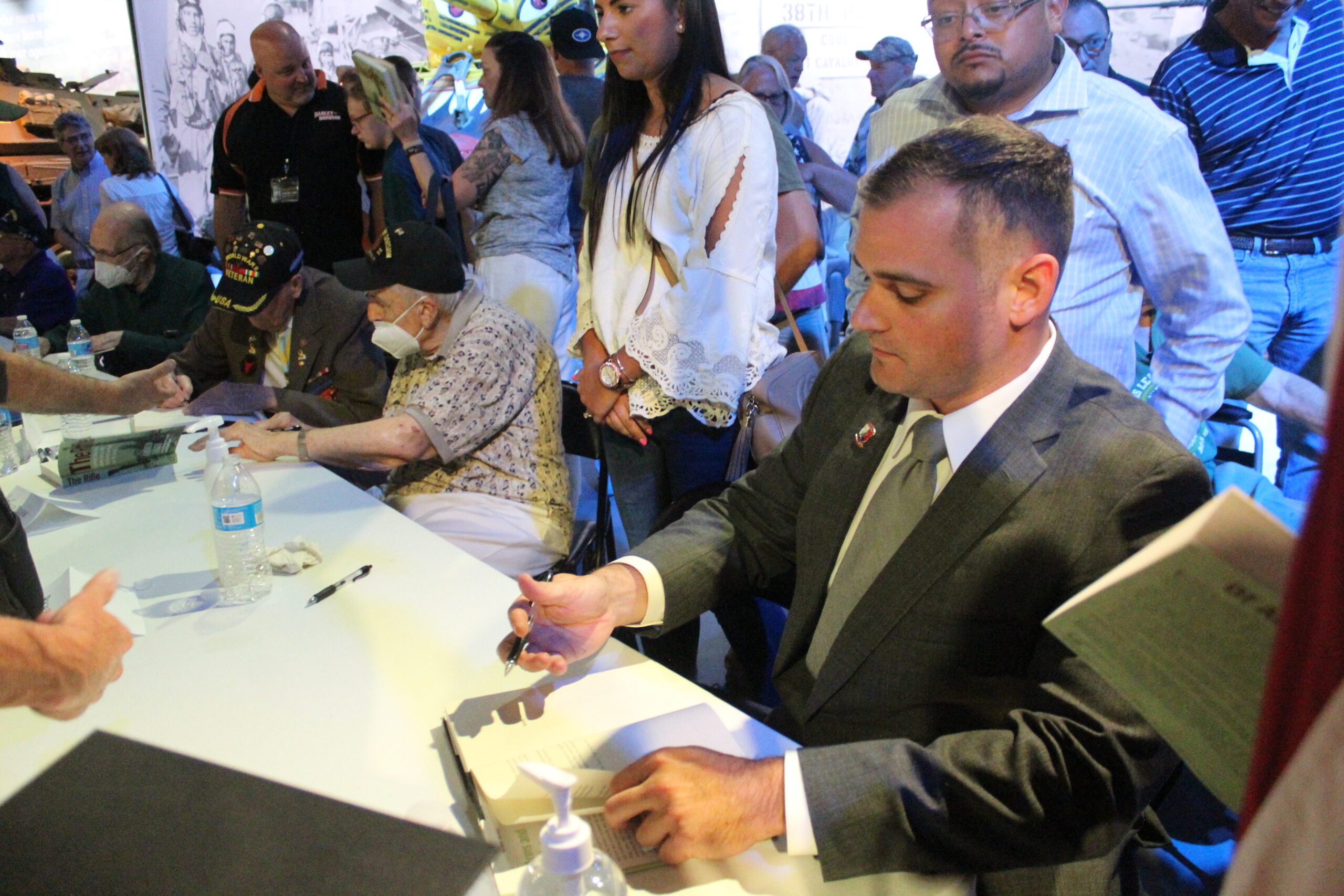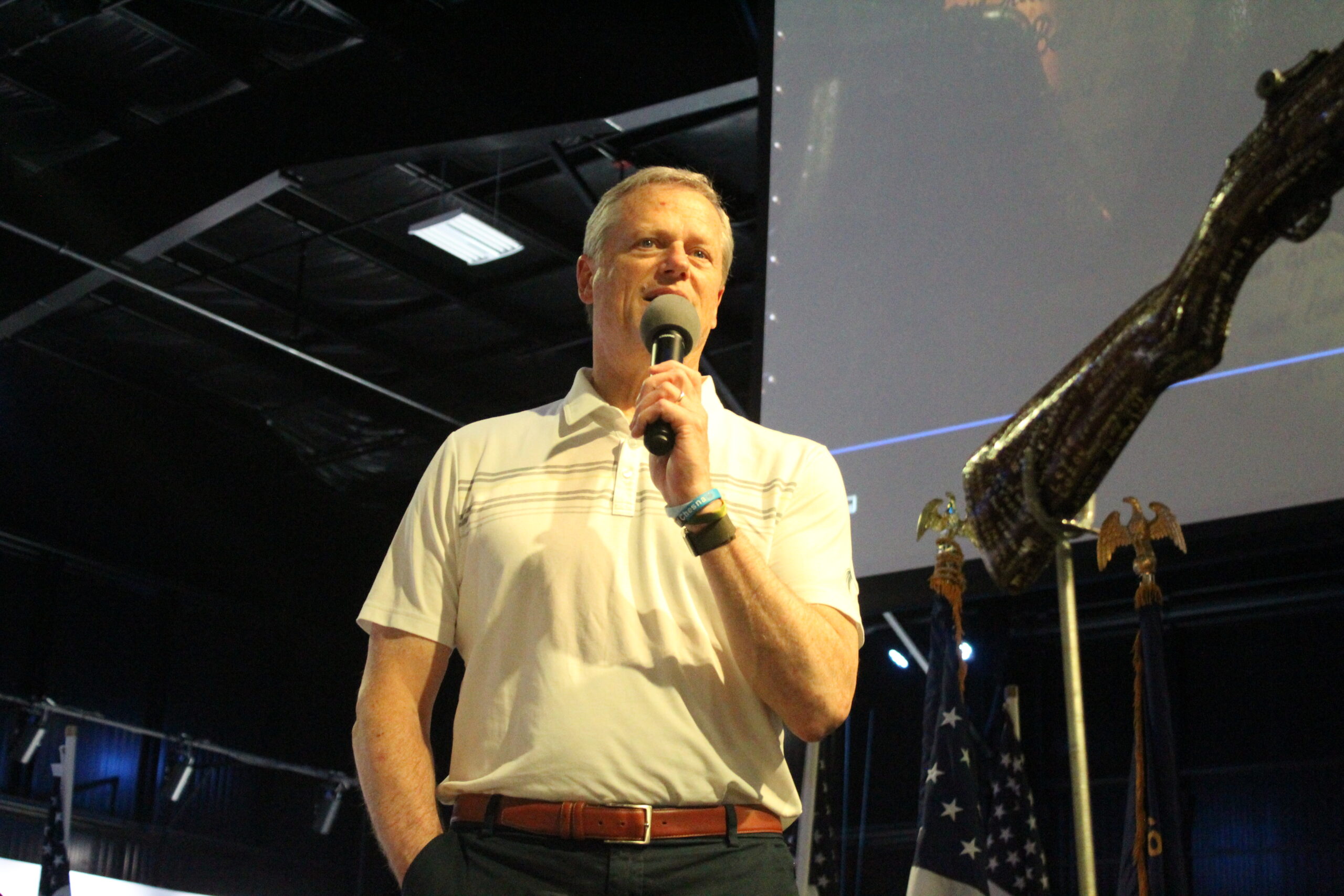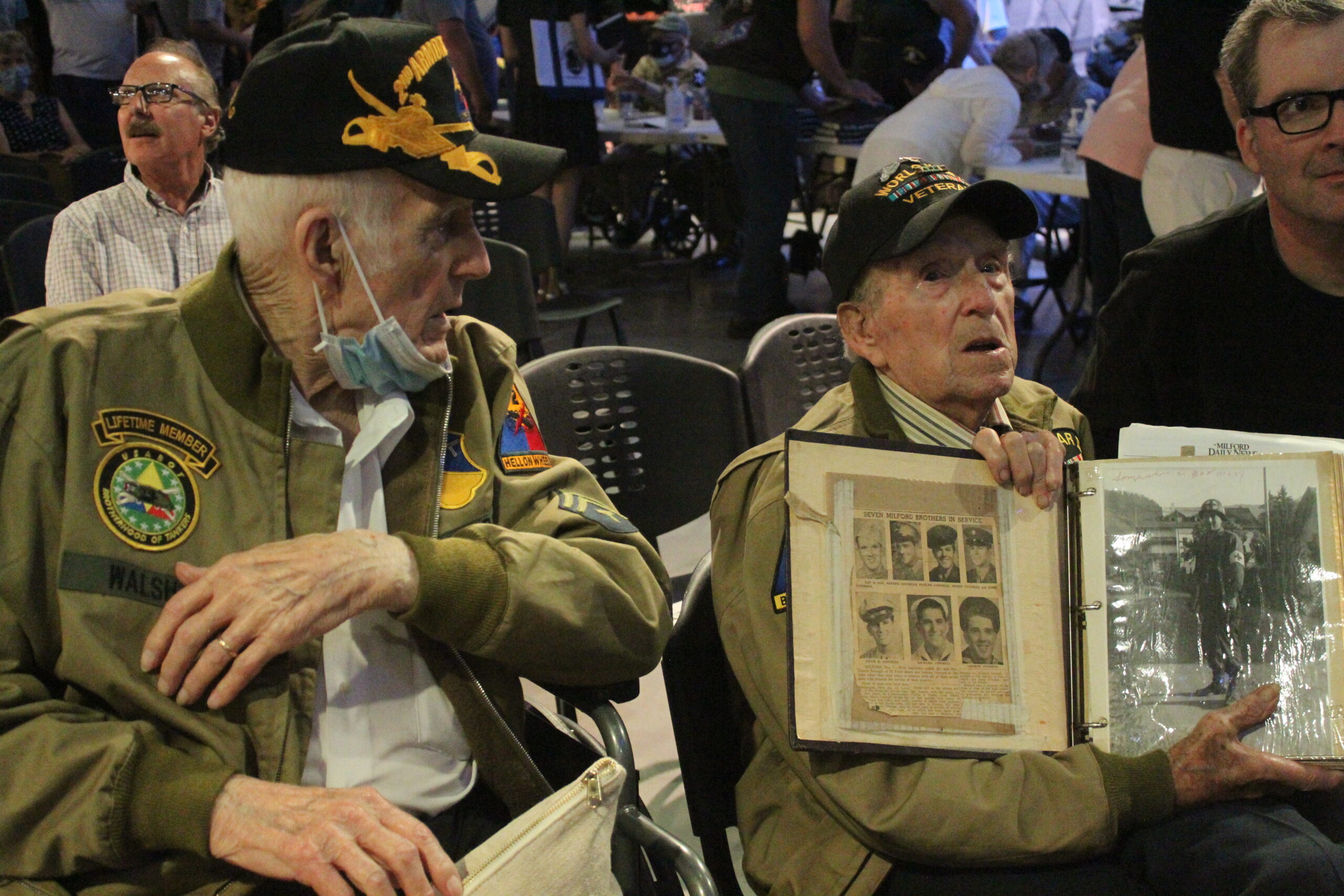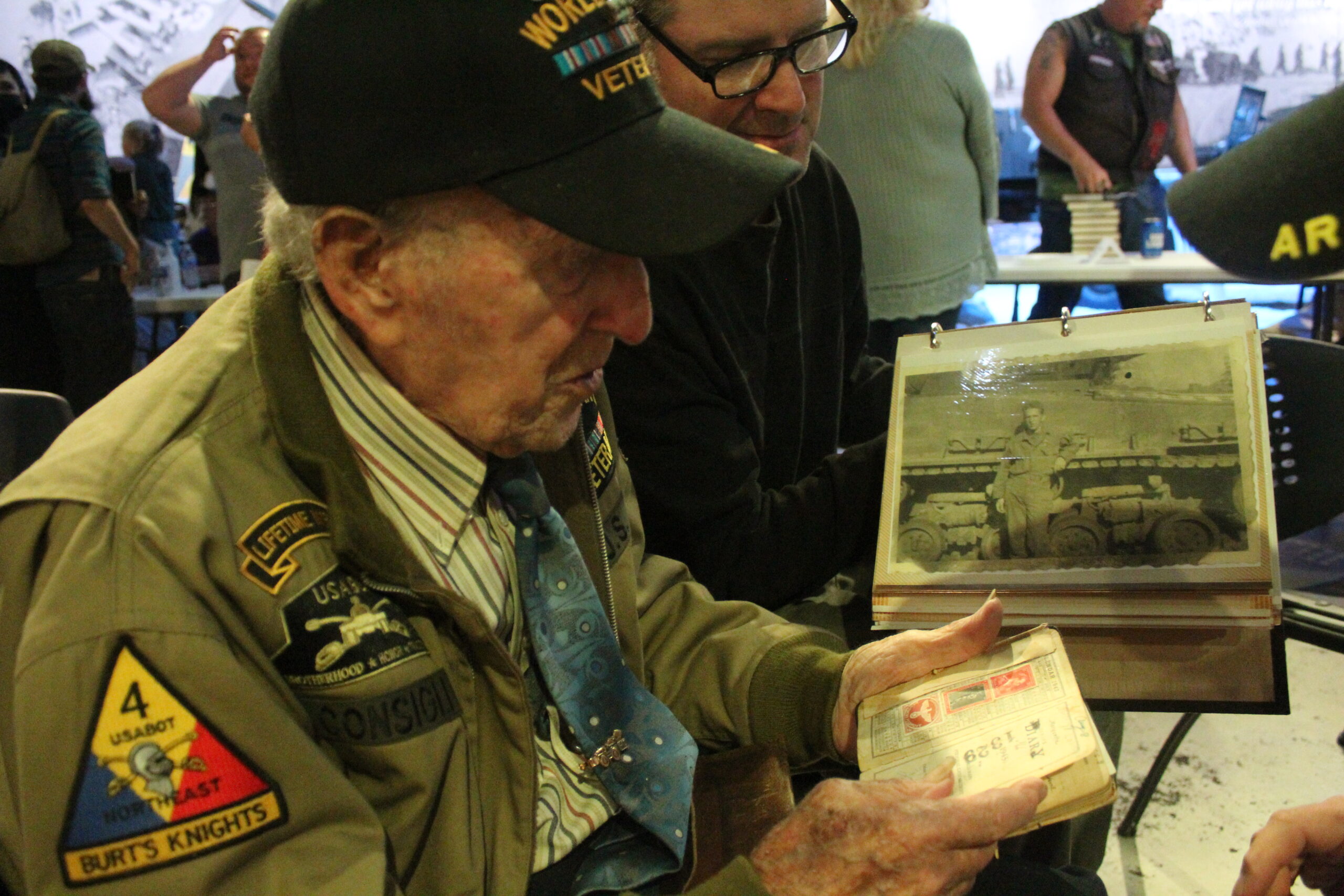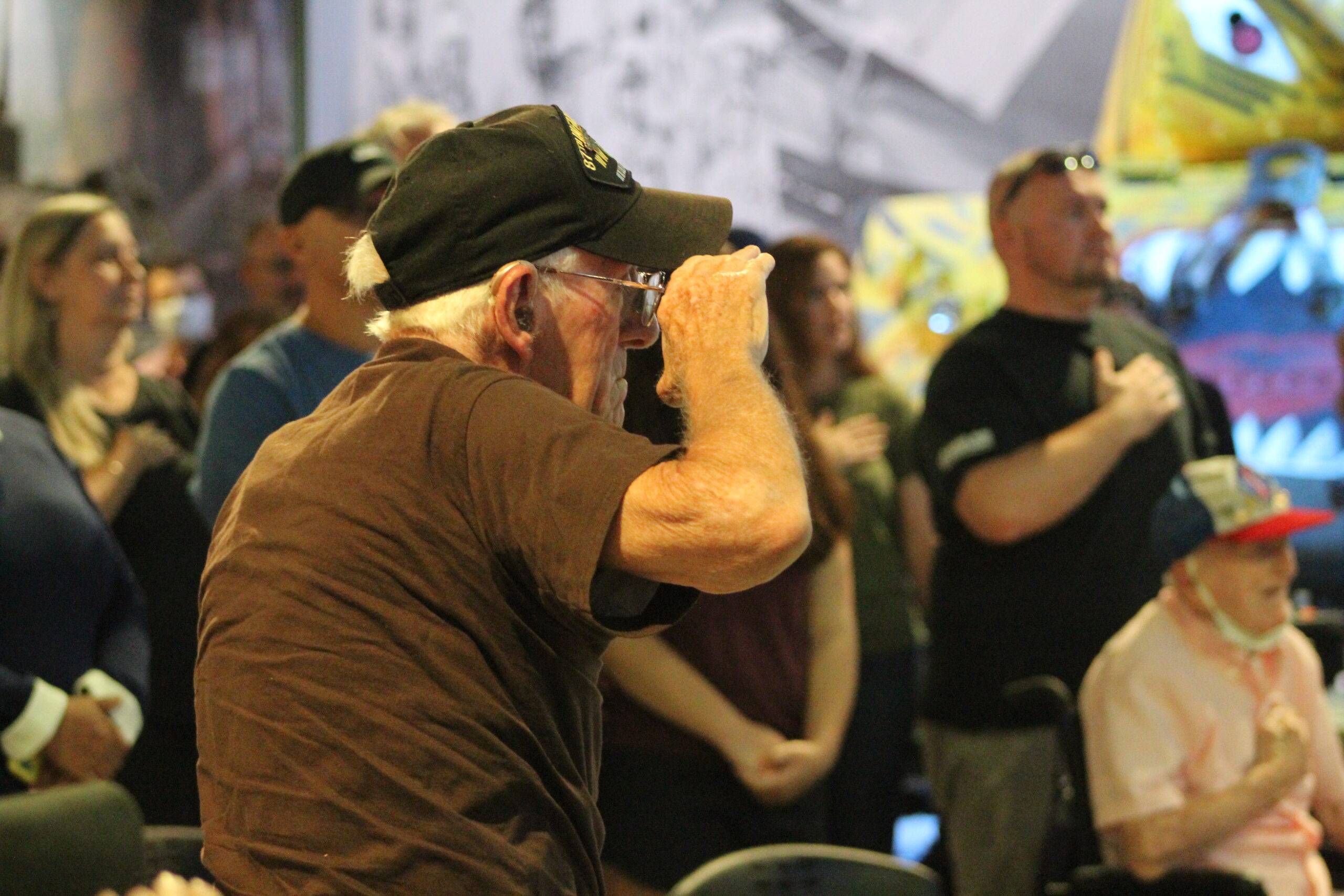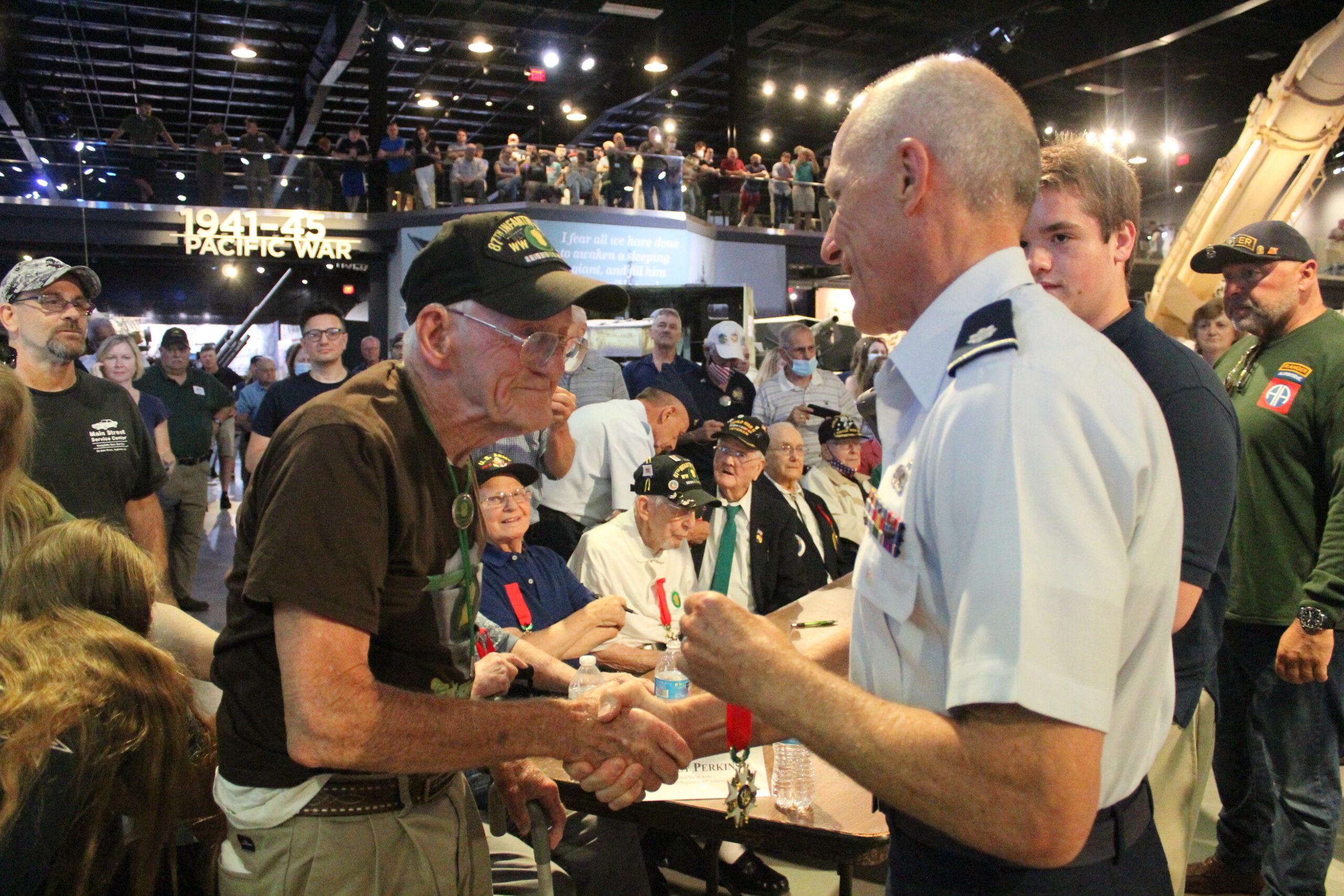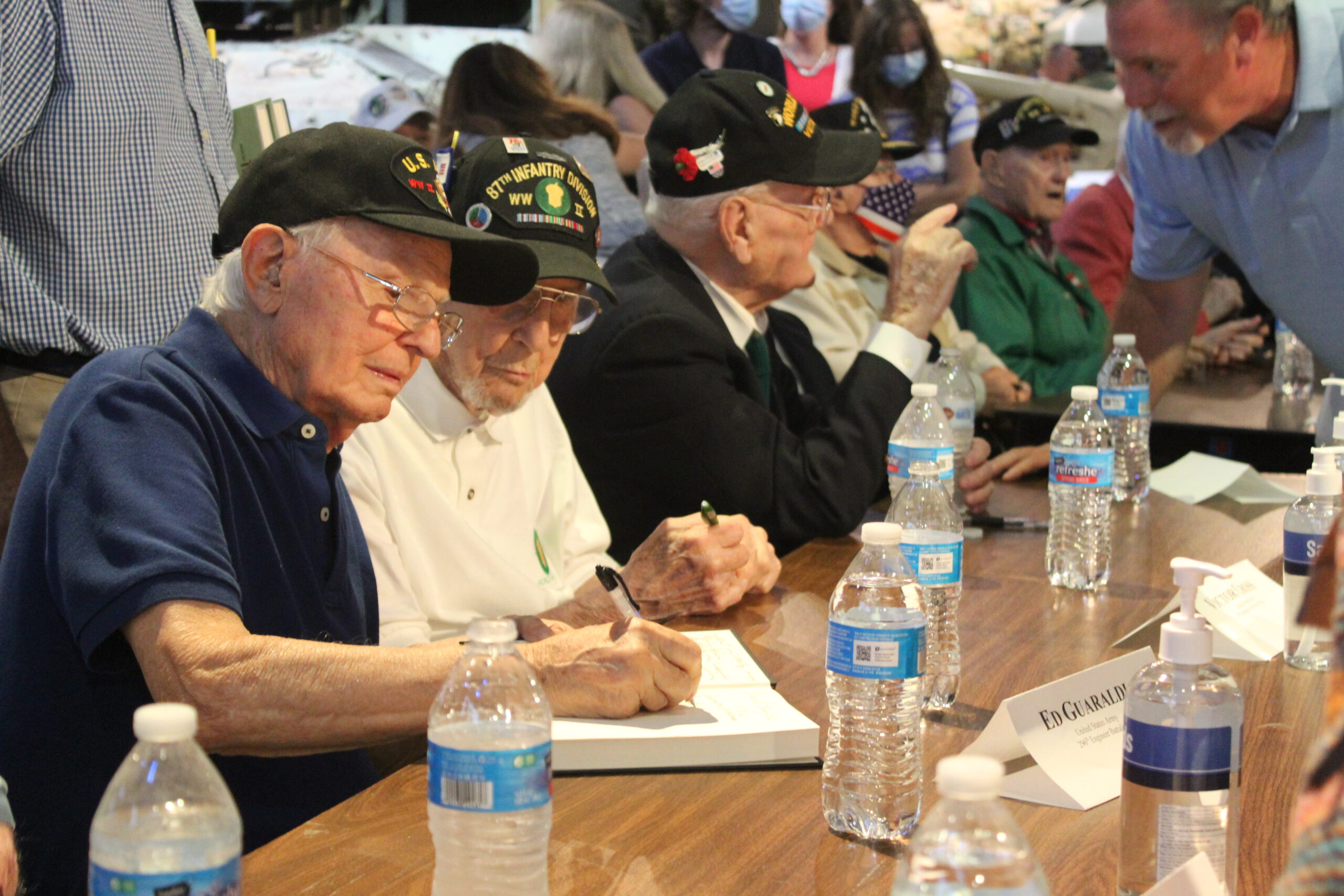By Laura Hayes, Contributing Writer
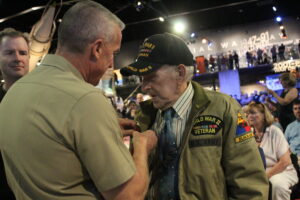
HUDSON — Alfred Consigli was 18 and living in Milford when he was drafted to serve in World War II. He had never been to a city or rode a train.
When Consigli passed his tests to serve, the officer asked him, “Do you like guns?”
“I said, ‘Yes, I like guns,’” Consigli recalled to the Fifty Plus Advocate. “I shouldn’t have said that.”
Consigli was one of 58 World War II veterans who gathered at the American Heritage Museum for a special event on Aug. 1. Drawing hundreds of other attendees, the event was billed, in part, as a way to hear and preserve the stories of America’s aging community of World War II veterans.
Veteran recalls finding bazooka
Upon being drafted, Consigli was sent to be part of the “Black Cats,” General George Patton’s special tank battalion primed to fight at night.
He landed on Utah Beach and served in five major battles, including the Battle of the Bulge and the Ardennes.
“I was young,” Consigli said. “I used to do a lot of crazy.”
On one occasion, while in Luxembourg, Consigli was walking through the woods when he found a wooden box. He opened it and found a German bazooka.
Consigli assembled the weapon and fired it.
“Instead of the officer saying, ‘You should have never looked in that box, it could be booby trapped,’ he said, ‘Alright, be careful,’” Consigli said. “He just walked away. But that made me feel good that I put it together.”
WWII stories make up veteran’s intergenerational book
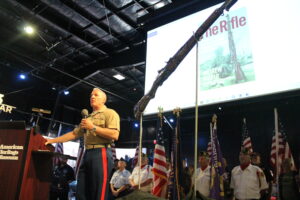
Veteran and author Andrew Biggio has heard tons of stories like Consigli’s. He put pen to paper on many of those stories for his book “The Rifle: Combat Stories from America’s Last WWII Veterans, Told Through an M1 Garand.”
“They taught me, as a veteran of Iraq and Afghanistan, that there was no difference between the men who raised their hands when Pearl Harbor was attacked and the men and women who raised their hands after the Twin Towers burned,” Biggio said of the World War II veterans.
Biggio himself was a sergeant in the Marine Corps, participating in Operation Iraqi Freedom and Operation Enduring Freedom in Iraq and Afghanistan, respectively.
Along the way, he had been wanting to meet the WWII veterans since he was a child.
Many people who later served did so because of the actions of the WWII veterans, said Biggio.
“You jumped into Normandy,” he said to those veterans. “You stormed the beaches. You fought in the Battle of the Bulge. You fought in the China Burma India Campaign. You fought in the Pacific. You raised the flag on Iwo Jima. I can’t thank you enough for being here.”
When Biggio came home from Iraq and Afghanistan, he would pass the Andrew Biggio square in Winthrop, Mass. every day. The square is named after his grandfather’s brother, who was killed in action in WWII at the age of 19.
He decided that he wanted to find out what happened to the first Andrew Biggio. So, he began reading Biggio’s letters. In one letter, Biggio learned that his great uncle enjoyed the M1 Garand rifle.
That connected Biggio to his long lost relative. So, he purchased an M1 Garand.
Biggio later showed the rifle to his neighbor, who fought in WWII, including at Okinawa as a Marine.
“As soon as I put this rifle in his hands, he had this burst of energy,” Biggio said. “He started waving the rifle around, smiling from ear-to-ear, [saying] ‘Oh my God, I haven’t held one of these in so long.”
That neighbor started telling Biggio about the Battle of Okinawa. He became the first person to sign the rifle.
“I made it a mission — call it therapy, call it research, call it what have you — of meeting these men that we’ve been reading about our whole lives,” Biggio said.
Being part of the youngest generation of veterans, Biggio saw this project as a way to say goodbye to the oldest generation of veterans. He would visit a veteran, hear their story, and have them sign his rifle.
“The fact that they were able to come home and live a successful life after the war teaches our younger vets so much,” Biggio said.
American Heritage Museum hosts large scale event
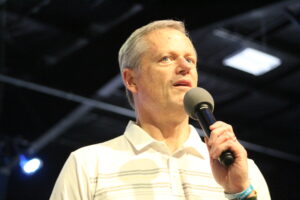
Back at the American Heritage Museum, several veterans, including Consigli, received the French Legion of Honor. World War II veterans who fought in one or more of the four main campaigns in the liberation of France, including Normandy, Southern France, Northern France and the Ardennes are eligible for the honor.
A number of people spoke during the Aug. 1 ceremony, including Gov. Charlie Baker. But the guests of honor were the veterans.
Among them was Mildred Cox, who was a stenographer in the Marine Corp.’s Commanding Office and lives in Quincy.
Her’s is one of over 200 names on Biggio’s rifle. She was also the first female veteran to sign the rifle, however.
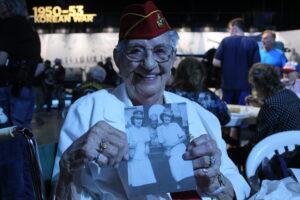
Cox decided to enlist when she turned 20 to free a man who had been doing clerical work to be able to fight.
Cox grew up learning the Robert’s Rules of Order, which is viewed as a foundational book dictating modern parliamentary procedure.
Her father was a disabled veteran and was involved in organizations. Her younger brother had already enlisted.
“It was expected that I would do my service, and I was happy to do it,” Cox said.
She served for two years. Women who were in the Marines didn’t serve overseas, she said, so she served in North and South Carolina. But the best part of the time was that she was near her brother, who was serving in Fort Jackson at the time.
Cox’s brother later fought in the Battle of the Bulge and earned the Silver Star.
“No matter what you go through, rise to the top,” Cox said. “Be obstinate. Reach your goal. That’s the best thing you can do. Be an optimist. There’s enough pessimism in the world, so be an optimist.”
Photos/Laura Hayes

